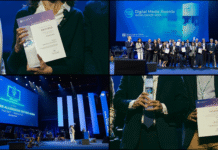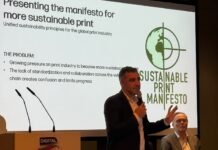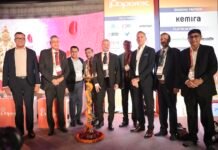
In March 2020, Heidelberg launched a transformation program designed to boost profitability, enhance competitiveness, and secure its future. According to a press release dated 13 August 2020, because of the consistent and prompt implementation of key measures in this program, the company already generated positive results in the recently concluded first quarter of the financial year 2020/2021 (April 1 to June 30, 2020). As a result, it was able to successfully counter the immense operational pressures brought by the Covid-19 pandemic.
Nonetheless, as anticipated, the consequences of the global economic crisis had a considerable impact on sales and incoming orders in the first quarter. For example, at approximately € 330 million, net sales were around a third lower than in the same quarter of the previous year (€ 502 million). Incoming orders in the first three months dropped by a total of 44% to € 346 million (previous year – € 615 million), with a clear improvement recorded in June compared to the last two months of the quarter. This upward trend also continued through July.
Despite the challenging market development, Heidelberg achieved EBITDA excluding restructuring result of € 60 million (Q1 2019/2020: € 14 million), which was due to earnings of € 73 million generated by restructuring the company pension plans. Consequently, the net result after taxes in the quarter was positive, at € 5 million (previous year – € -31 million). Given that net financial debt has been reduced to € 122 million (previous year – € 391 million), Heidelberg is in a financially stable position.
Thanks to the comprehensive package of measures in the transformation program, which includes improvements to structures and organization, as well as the divestment of loss generating business activities and peripheral elements of the portfolio, Heidelberg is on track to improve its profitability by some € 100 million in the medium term.

“As expected, and as across virtually all sectors and particularly the export-oriented mechanical engineering industry, the Covid-19 pandemic had a huge impact on the quarter. The consistent implementation of our transformation program is helping us maintain a stable course through the crisis. From a financial perspective, we are on a solid footing, are continuing to streamline our portfolio, and are already seeing the first positive effects of our cost-efficiency measures. At the same time, we are sensing a gradual recovery on the market, and incoming orders are starting to increase again as a result. Our market initiatives are helping us consistently address our customers’ requirements in these challenging times. We are confident we will continue to perform well by having the right offerings and solutions,” says Heidelberg CEO Rainer Hundsdörfer.
The core business is sheetfed offset printing
The company anticipates further positive effects in the forthcoming quarters from its cost efficiency measures, along with additional earnings in the mid-double-digit million euro range from its sale of the Gallus Group, which is to be completed in the current calendar year. Heidelberg also sold its Belgian subsidiary CERM N.V. at the end of July as part of a management buyout. CERM specializes in developing management information software for the narrow-web label market, a sector that Heidelberg has pulled out of, with the sale of Gallus. This transaction is generating a gain on disposal of approximately € 8 million. Both portfolio measures are helping Heidelberg carry forward its consistent alignment on its profitable core business in sheetfed printing. At the same time, this is further strengthening the company’s balance sheet and financial position, which is directly beneficial in the current market crisis. The company says its forecast for the 2020/21 fiscal year remains unchanged.

















